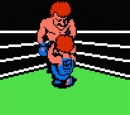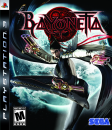
Not too shabby for a 384 kilobyte game, wouldn’t you say?
The information comes by way of download and mobile tracking firm FADE (Forecasting and Analysing Digital Entertainment), who released their annual report detailing the top WiiWare and Virtual Console sales and trends late yesterday evening. The report is particularly unique (and also quite handy) due to the current dearth of information on download sales figures across the interactive industry.
Topping the digital charts in North America for 2009 is 1990’s Super Mario Bros. 3, which managed to net Nintendo another $5M in pure profit last year (the game sells for 500 Nintendo Points, equivalent to $5.00). Following closely behind was 2D Boy’s excellent WiiWare release, World of Goo, which added another $4.8M to its coffers in 2009.
To put this accomplishment in perspective, New Super Mario Bros. Wii tallied 1.4M units in 2009, making it the year’s 10th best-selling game in North America (this, despite being released in the middle of November). Super Mario Bros. 3 – with its 1M paid downloads across the year – would almost certainly have found a seat at the top-20 table, if not the top-15.*
The claim would still stand even if one were to include the digital content of competing online storefronts, such as Xbox Live Arcade, whose top-seller for the year was EA’s Battlefield 1943 – a game which saw an estimated 830,000 downloads in 2009, making its volume still less than good ol’ Mario 3.
Stare at these numbers long enough and the mind starts to ponder: is this a sad reflection of an industry in creative peril (which already relies heavily upon sequel after sequel; remake after remake; year after year) or is it that Mario just knows how to sell the goods?

Many in the video game industry would be very quick to justify with the latter and move along, giving it not one second of extra thought. However that would be foolish; to say that a game sells just because of a character, and to bitch and moan when their product fails to do the same, is terribly naïve.
Brands can and do die. Witness one Sonic T. Hedgehog. Once a celebrity of the 16-bit era, he is now the Lindsay Lohan of the gamespace, popping up every now and again to remind us that he’s alive and didn’t O.D. on amphetamines – though no one really cares.
Mario’s greater lesson is that complex games aren’t always to the benefit of the player (and the market, which he controls). Instead, we find that 100 GB doesn’t always hold something as special and creative as 3 megabits used to.
*NPD Group releases annual data only on the top-10 best-selling games per year. Anything below this threshold can only be considered speculation.
Estimated Top Western Downloadable Wii Titles by Revenue, 2009 (Price in USD):
- Super Mario Bros. 3 (Nintendo, NES) - $5,000,000 ($5.00)
- World of Goo (2D Boy, WiiWare) - $4,800,000 ($15.00)
- Super Mario Bros. (Nintendo, NES) - $3,300,000 ($5.00)
- Super Mario World (Nintendo, SNES) - $2,900,000 ($8.00)
- Super Mario 64 (Nintendo, N64) - $2,700,000 ($10.00)
- Tetris Party (Hudson, WiiWare) - $2,600,000 ($12.00)
- Legend of Zelda: Ocarina of Time, the (Nintendo, N64) - $2,300,000 ($10.00)
- Pokémon Rumble (Nintendo, WiiWare) - $2,200,000 ($15.00)
- Legend of Zelda: Majora’s Mask, the (Nintendo, N64) - $2,100,000 ($10.00)
- My Pokémon Ranch (Nintendo, WiiWare) - $2,000,000 ($10.00)
http://trueslant.com/josephhayden/2010/02/23/super-mario-3-sells-million-copies-20-years-later/




















